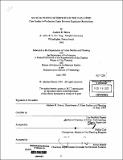| dc.contributor.advisor | Lisa Redfield Peattie. | en_US |
| dc.contributor.author | Shawa, Aladeen R | en_US |
| dc.contributor.other | Massachusetts Institute of Technology. Dept. of Architecture. | en_US |
| dc.coverage.spatial | a-is--- | en_US |
| dc.date.accessioned | 2012-04-26T18:40:40Z | |
| dc.date.available | 2012-04-26T18:40:40Z | |
| dc.date.copyright | 1991 | en_US |
| dc.date.issued | 1991 | en_US |
| dc.identifier.uri | http://hdl.handle.net/1721.1/70330 | |
| dc.description | Thesis (M.C.P.)--Massachusetts Institute of Technology, Dept. of Urban Studies and Planning, and, (M.S.)--Massachusetts Institute of Technology, Dept. of Architecture, 1991. | en_US |
| dc.description | Includes bibliographical references (p. 178-180). | en_US |
| dc.description.abstract | The situation in the occupied territories is distinguished from other cases of authoritarian, colonial or even military rule by the high level of consistency and the wide range of administrative levels at which the occupying power has been able to implement its restrictive policies. This regulatory framework has remained flexible, expanding in scope of coverage and consistency of implementation throughout the years of occupation, guided by shifts in Israeli policy and the intensity of rejection and the pattern of response by the Palestinian population. Palestinian manufacturing firms that were initiated and functioned within this framework were molded by its limiting guidelines and plagued by the vulnerabilities it promoted. All their activities had to comply with Israeli policy, pose no real threat to Israeli producers or contribute effectively to a viable local process of economic development. Most of these firms evolved in a few less restricted subsectors and engaged in rigid production processes that specialized in the mass production of a limited range of consumer goods. Some of the firms that were initiated outside this framework, but eventually forced to function within it as a result of intensified surveillance of informal activities, were able to develop an independent foundation, flexible production processes and links with the local and Israeli economies. The advent of the Palestinian uprising in 1987 brought with it a further intensification of the regulatory framework that bordered on the virtual obstruction of economic activities in the territories. This situation placed the two broad firm categories under a serious test of survival. Firms within the two categories were left with the choice of functioning within the new obstructive regulatory framework and maintaining some access to formal sources of raw materials, machinery and technological transfer which could only be obtained from or through Israeli sources, or of functioning outside the system and remaining physically confined to an obstructed local economy. The goal of this thesis is three-fold: first, to identify the governmental and nongovernmental components of this regulatory framework and shed light on their functions and the reasons behind their effectiveness; second, to discuss the impact of this regulatory framework on the structure and characteristics of local firms that were initiated and functioned within it and others that were initiated outside; third, to compare the response and the level of success or failure of firms within the two categories to shifts in policy as well as to the changes of economic and political conditions during the years of the Palestinian uprising. | en_US |
| dc.format.extent | 180 p. | en_US |
| dc.language.iso | eng | en_US |
| dc.publisher | Massachusetts Institute of Technology | en_US |
| dc.rights | M.I.T. theses are protected by
copyright. They may be viewed from this source for any purpose, but
reproduction or distribution in any format is prohibited without written
permission. See provided URL for inquiries about permission. | en_US |
| dc.rights.uri | http://dspace.mit.edu/handle/1721.1/7582 | en_US |
| dc.subject | Urban Studies and Planning. | en_US |
| dc.subject | Architecture. | en_US |
| dc.title | Manufacturing enterprises in the Gaza Strip : case studies in production under extreme regulatory restrictions. | en_US |
| dc.type | Thesis | en_US |
| dc.description.degree | M.S. | en_US |
| dc.description.degree | M.C.P. | en_US |
| dc.contributor.department | Massachusetts Institute of Technology. Department of Architecture | |
| dc.contributor.department | Massachusetts Institute of Technology. Department of Urban Studies and Planning | |
| dc.identifier.oclc | 47006429 | en_US |
